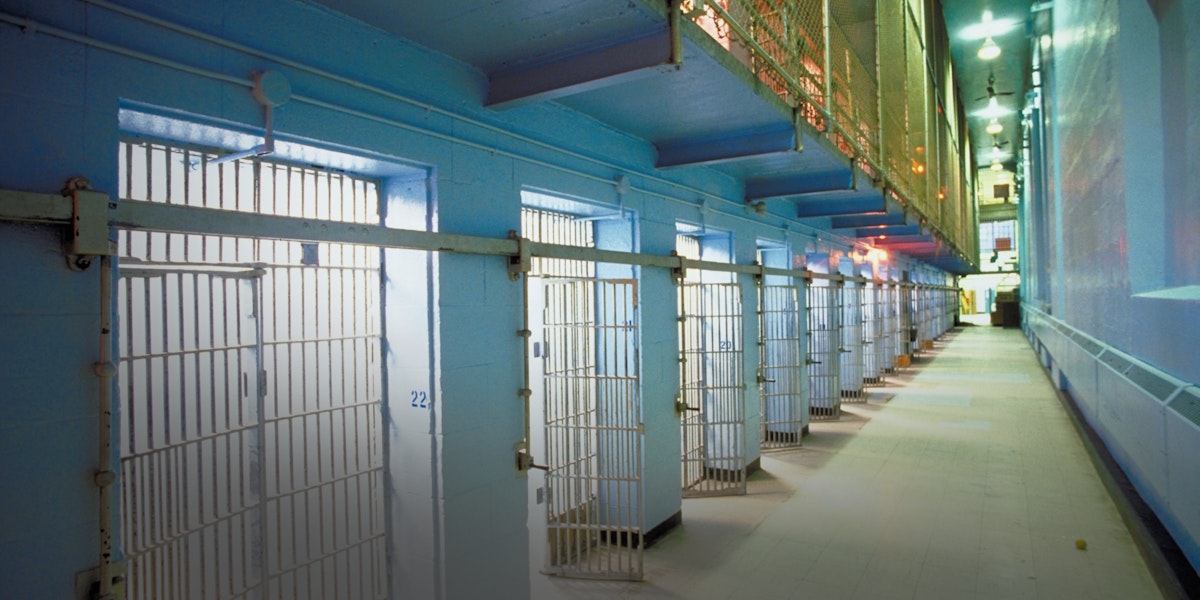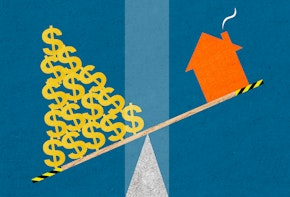Introduction
If there is one thing the United States excels at, it’s locking people up. With only 5 percent of the world’s population, we house 25 percent of its prisoners. Over 2 million people are currently incarcerated in our jails and prisons, meaning that both per capita and in absolute terms, the United States imprisons more of its citizens than any other nation in the world, including far more autocratic countries such as Russia, China, and Iran.1 When you include the 4.75 million Americans who are on probation or parole, the total number of people in our criminal justice system tops 6 million. If this dispersed population were concentrated in one city, it would be the second-most populous in the country.2
It was not always like this. Throughout most of U.S. history, the prison population rose and fell in an incremental pattern, responding to fluctuations in the economy and whether the country was at war. But starting in the 1970s, the prison population began to grow at an unprecedented rate, quintupling in the decades between 1980 and today.
Until the early 1990s, this uptick in incarceration appeared simply to be a response to the dramatic surge in crime rates, with political leaders, prosecutors, and judges assuming a popular mandate to get “tough on crime.” The result was a series of draconian drug laws and sentencing guidelines, as well as a variety of “zero tolerance” policing strategies, which sought to punish and deter crime by taking criminals off the street, for increasingly lengthy stretches.
While sentencing guidelines were ostensibly designed to create some uniformity in criminal sanctions, in practice, these developments had an invidious—and socially devastating—impact on African American communities. Black Americans make up only 13 percent of the national population, but 40 percent of the prison population, with approximately 1 million African Americans currently behind bars.3 If these trends hold, one-third of all African American men in this country will be imprisoned at some point in their lifetimes.4
The social and economic costs of this sprawling and ever-expanding penal state are breathtaking. Yet the benefits derived from this system are not self-evident. For nearly a quarter of a century—since the early 1990s—crime rates have been dropping, precipitously, even as the prison population continues to grow. 5 As Jed Rakoff, a federal judge in New York, recently observed, “the supposition on which our mass incarceration is premised—namely, that it materially reduces crime—is, at best, a hunch. Yet the price we pay for acting on this hunch is enormous.” That cost is now roughly $80 billion a year to run our jails and prisons.6 This archipelago of institutions is overcrowded, inefficient, and expensive, and a great many of the inmates being detained pose minimal threat to public safety. Speaking before a subcommittee of the House of Representatives this spring, Supreme Court Justice Anthony Kennedy enunciated a conclusion that has become increasingly hard to deny: “this idea of total incarceration just isn’t working.”7
It might be tempting to ascribe the decline in crime to the construction of so many new prisons, but after countless studies of this possible correlation (and of the many other potential explanations for the drop in crime), the evidence remains far from conclusive.
Social Costs
In an ideal world, criminal justice policy would be formulated through a dispassionate calculation of costs and benefits, but in practice, it is shaped much more frequently by politics, prejudice, fear—and force of habit. The kind of tough-on-crime rhetoric and policies that gave rise to the prison state were popular with both Republicans and Democrats, and were embraced not just by presidents such as Bill Clinton, and by legislators at the state and federal level, but, crucially, by prosecutors, and by elected judges, who have as much or more impact on the day-to-day churn of criminal justice as those who are drafting the statutes. As a result of this top-to-bottom buy-in, perhaps, there was a considerable lag between the point at which the social costs of mass incarceration became painfully clear, and the point at which any political leaders were prepared to publicly question the continued benefits.
Those social costs to incarcerated individuals are hardly confined to the duration of any criminal sentence: convicted felons returning to their communities often struggled to find work. In an interview this spring, President Barack Obama pointed out that, “When you break down why people aren’t getting back into the labor force, even as jobs are being created, a big chunk of that is the young male population with felony histories.”8
Moreover, ex-convicts are often excluded from the ballot. By 2000, nearly two million African Americans had been deprived of the right to vote by felon disenfranchisement laws. According to the Sentencing Project, by 2004, African American disenfranchisement rates in ten states had reached 15 percent.9 By 2011, 20 percent of all the African Americans in the state of Virginia were barred from voting, and nearly a quarter of all African Americans of voting age living in Florida.10 There is a reasonable basis for concluding that, beyond victimizing the individual citizens, these disenfranchisement statutes may have swung presidential elections. (According to one study, they affected the outcome of seven U.S. Senate races between 1997 and 1998.)11
When a certain number of people in a given neighborhood get sucked into the criminal justice system, a series of other negative social pathologies take hold: families fracture, child poverty increases, education slips. In the words of the Harvard sociologist Bruce Western, “Prison has become the new poverty trap.”12 Social scientists have devised a term—million-dollar blocks—to describe residential blocks in certain cities that hit a tipping point, with a certain number of people locked up, and begin to suffer profound social and economic consequences.13 A child raised in a family in which someone is imprisoned becomes statistically more likely to end up in prison themselves. In this respect, far from keeping us safe, mass incarceration may end up fuelling precisely the societal ills that it was ostensibly designed to alleviate.
But perhaps the gravest paradox of mass incarceration is that, in certain communities, the penal system begins to perpetuate itself, as the social costs of incarceration spill over from the individual to society at large.
Fiscal Costs
The price tag on those million-dollar blocks is assumed by taxpayers, and implicit in this kind of research is the idea that mass incarceration is an affront not just to liberty—but also to good fiscal sense. Having 2 million people behind bars visits destruction and dysfunction on families and neighborhoods, and the fiscal burden of that dysfunction is borne by all of us. But there are also the spiraling costs of maintaining the prison system itself.
One peculiarity of mandatory minimum sentences—particularly the notion of life sentences for nonviolent crimes—is that most people actually age out of criminal activity. Right now, more than 10 percent of the federal and state inmate population is made up of people serving life sentences, and ten thousand of these are convicts serving life for nonviolent offenses. Yet most criminals mature out of lawbreaking by the time they reach thirty, and homicide and drug-arrest rates peak much younger, at nineteen.14 Since 1990, the population of inmates older than fifty-five has increased by over 500 percent, to nearly 150,000 inmates. The costs of supporting this aging prison population are significant: state and federal prisons now spend $4 billion a year just on health care alone.15 Of course, the most rational approach would be to dramatically limit sentences for nonviolent crimes, but it is unlikely that this proposal will find much traction, given our national taste for retributive justice.
With such colossal public expenditures, it should come as no surprise that a lucrative private prison industry has emerged in recent decades and now manages a network of facilities across the country. The population in private federal prisons more than doubled between 2000 and 2010, according to a report by the Justice Policy Institute.16 The two largest companies alone, GEO and Corrections Corporation of America (CCA), account for nearly $3 billion in revenue each year.17 These for-profit prisons have little interest in any reconsideration of our penological philosophy; on the contrary, they have spent tens of millions of dollars on political contributions and lobbying to preserve the status quo.
In case there was any doubt about CCA’s opposition to reform, its annual report explains:
The demand for our facilities and services could be adversely affected by the relaxation of enforcement efforts, leniency in conviction or parole standards and sentencing practices or through the decriminalization of certain activities that are currently proscribed by our criminal laws. For instance, any changes with respect to drugs and controlled substances or illegal immigration could affect the number of persons arrested, convicted, and sentenced, thereby potentially reducing demand for correctional facilities to house them. . . . Legislation has been proposed in numerous jurisdictions that could lower minimum sentences for some non-violent crimes and make more inmates eligible for early release based on good behavior.18
The Opportunity
As the social and fiscal costs of mass incarceration multiply and become unsustainable, and as the benefits appear more and more elusive, a new consensus is emerging that something must indeed be done. While many commentators express alarm at the social costs, it may be that what finally changes the system is simply the bottom line. In President Obama’s words, mass incarceration is “breaking the bank.”
After peaking in 2009, the prison population has dropped, by small but steady increments. The reasons for this change are complex, but in some measure the drop is due to the fact that state budgets have become so constrained that officials are being forced to explore alternatives to incarceration. Multiple states, including California, Texas, South Carolina, and Ohio, have actively reduced their existing prison populations. Other states have amended mandatory minimum statutes, and worked on revising rehabilitation, probation, and parole programs—and they have managed to do so without any corresponding increase in crime.
At the federal level, in 2013, U.S. attorney general Eric Holder introduced significant reforms at the Justice Department, eliminating the requirement that prosecutors must charge crimes with an eye to securing the longest prison terms. And this imperative for reform appears to be shared across the political spectrum: Republican senators Ted Cruz and Rand Paul have introduced legislation that would abolish mandatory minimum sentences for certain nonviolent drug offenses. Conservative groups, such as Right on Crime, are now articulating the “conservative case for reform,” and the Koch brothers have partnered with the American Civil Liberties Union in an effort to roll back mass incarceration.19 The U.S. sentencing commission also voted unanimously last summer to give tens of thousands of federal prisoners the opportunity to reduce their sentences.
It does appear that we are at a moment in which various forces have converged to make real reform possible. After a string of police shootings of unarmed black men renewed the national focus on criminal justice policy and its impact on black America, contenders in the 2016 presidential race have taken up the cause. In her first major policy address after declaring her candidacy, Hillary Clinton delivered a speech at Columbia University in April, in which she called for an end to “the era of mass incarceration.” Rand Paul, a longstanding critic of mass incarceration and the war on drugs, replied: “We welcome her to the fight.”20
There is, increasingly, widespread agreement that this is a sound and overdue agenda. But the prison state developed slowly, over four decades, to a point where 2 million people are institutionalized, and the recent declines in the size of the prison population have been comparatively minute; if you continued to shrink the population at current rates, the process would take decades. So how can we achieve real change?
A Holistic Solution
In a recent interview, President Obama suggested that the chief responsibility for reform lies with Congress.21 It is certainly true that because legislators set the penalties for many crimes, they are in a unique position to repeal or amend mandatory minimum statutes and to roll back some of the most excessive anti-drug legislation. These kinds of changes are necessary, but also insufficient: the problem has reached such proportions that any kind of forward-looking reduction in criminal sanctions must be accompanied by retroactive reductions or amnesties for those currently serving long sentences.
But realistically, we cannot wait for Congress. Tough-on-crime political grandstanding may seem antique in 2015, but for some minority of lawmakers, it remains irresistible. As a result, when new legislation is proposed to adjust sentencing guidelines, or to create a point system whereby well-behaved prisoners who pose no apparent danger to society can apply for early release, these bills have been killed before they have a chance to become law.22
As Judge Rakoff says plainly:
What is called for . . . is leadership: those whom the public does respect should point out why statutes prescribing mandatory minimums, draconian guidelines, and the like are not the solution in controlling crime, and why, in any case, in the long-term, the price of mass incarceration is too high to pay, not just in economic terms, but also in terms of shared social values.
That leadership is unlikely to come from Congress, and while it does appear to be coming, at least at a rhetorical level, from the president—and from aspiring presidential candidates, from Clinton to Paul—the scope of the crisis is such that no quantity of speeches and goodwill will be sufficient. Some, like former Virginia senator Jim Webb, have called for a presidential commission on mass incarceration, which could study the problem in depth and then recommend an omnibus series of solutions.23 But the problem has already been studied in some detail; indeed, Congress recently created the Charles Colson Task Force on Federal Corrections to study the issue and make recommendations on alleviating overcrowding in federal prisons.
The real obstacle to summoning the appropriate leadership on this issue is that the criminal justice system has nocenter of gravity. As the Carnegie Mellon criminal justice specialist Alfred Blumstein recently pointed out, there is no one place to apply pressure, because power is distributed so diffusely through the system:
You have legislators who decide what’s a crime and establish the range of penalties. You have judges who impose the sentences. You have police who decide whom to arrest. And you have prosecutors who have wide discretion in what cases to bring, what charges to call for, and what sentences to agree to in plea bargains.24
While this decentralized quality may inhibit prompt and fundamental reform, if there is enough of a national sea-change in attitudes to mass incarceration, it could also prove to be an advantage. The only solution that will have a sufficient impact will be a holistic one, in which each of the relevant branches of government—at the federal, state, and local levels—plays a role. Because the politics of criminal justice is fraught with grandstanding, some of the most effective commonsense changes may not be immediately feasible at the national level. Amending federal law to decriminalize marijuana, for example, would have a major impact on who we lock up, and for what, but it is unlikely to happen any time soon. In testimony before the Colson task force this spring, Marc Mauer, the director of the Sentencing Project, suggested that because the vast majority of criminals age out of criminal activity by middle age, federal prison terms should be capped at twenty years. This would be a sound, if revolutionary, idea. But, politically, it isa nonstarter.25
Rather than any fell-swoop panacea from Congress, it seems likely that the solution will be one in which smaller jurisdictions—states, but also cities—experiment with alternatives, and the innovations developed in these local laboratories are ultimately adopted more broadly. This trend is evident already in new approaches to the status of marijuana: despite inaction from the federal government, more and more states have been decriminalizing, or outright legalizing, the medical (and in some cases recreational) use of cannabis. Some states have been driven purely by budgetary constraints to explore alternatives to incarceration, and a number of jurisdictions are experimenting with “diversion” programs, which channel people into drug treatment or other rehabilitative programs rather than jail, or with alternatives to the current system of probation and parole, which move away from systems in which any violation of the terms of probation or release will land the individual back behind bars. This kind of tinkering is already yielding positive results in some parts of the country, and can hopefully pioneer—and provide a replicable example of—a criminal justice policy that is more fiscally responsible, but also less discriminatory, and more humane.
But these piecemeal approaches are not enough. The vanguard of criminal justice is really the culture and the specific professional incentives of prosecutors, which still align in favor of the most severe criminal penalties. The prison state came into existence through a gradual accretion of millions of small discretionary steps—by police officers and by prosecutors, who make decisions every day about who should be arrested, how they should be charged, and what punishment the government should seek. Perhaps the greatest challenge of criminal justice reform therefore will be the gradual transformation of the culture and institutional imperatives of the front lines of law enforcement, so that the stiffest penalty is no longer the default objective.
Judges also have a part to play. State judges are still elected in a majority of U.S. states, and they will be subject to the same political pressure that legislators are, but federal judges enjoy lifetime tenure in part to enable them to make the right decision in precisely this sort of situation. As Judge Rakoff has argued, if they feel constrained by sentencing guidelines, then they should prevail upon lawmakers to give them more flexibility.
The prison state took decades to reach its current proportions, and it will not be dismantled overnight. Reductions and rollbacks will require an effort that is concerted and incremental, one that involves presidential leadership and congressional action, but also initiative by police officers, prosecutors, and judges. New investments must be made, not just in pilot programs for alternatives to incarceration, but in better job training, education and post-release job placement for convicts, and in better drug treatment and mental health programs—both of which are vastly more cost-effective, over the long run, than incarceration.
This won’t be easy. It will require not only changes in policy, but also a fundamental change in how American culture views criminal justice. But hopefully this cultural change is already under way—as evident in the streets of Ferguson and Baltimore, and in states like California and Texas, which have begun, on their own initiative, to reduce their prison populations. The problem is daunting, but the status quo is immoral and unsustainable. The way forward is clear, and the moment is upon us.
Notes
- 1.“Banking on Bondage: Private Prisons and Mass Incarceration,” American Civil Liberties Union, November 11, 2011.
2.Adam Gopnik, “The Caging of America: Why Do We Lock Up So Many?” The New Yorker, January 30, 2012.
3.“Criminal Justice Fact Sheet,” NAACP, http://www.naacp.org/pages/criminal-justice-fact-sheet; “Prison Inmates at Midyear 2009: Statistical Tables,” Bureau of Justice Statistics, Department of Justice, June 2010.
4.Jed Rakoff, “Mass Incarceration: The Silence of the Judges,” New York Review of Books, May 21, 2015.
5.See “What Caused the Crime Decline?” Brennan Center for Justice, February 12, 2015.
6.“Smart on Crime: Reforming the Criminal Justice System for the 21st Century,” Department of Justice, August 2013.
7.Jess Bravin, “Two Supreme Court Justices Say Criminal Justice System Isn’t Working,” Wall Street Journal, March 24, 2015.
8.Christopher Ingraham, “Barack Obama Talks the War On Drugs with the Creator of The Wire,” Washington Post, March 26, 2015.
9.“State Level Estimates of Felon Disenfranchisement,” The Sentencing Project, 2010.
10.Heather Ann Thompson, “How Prisons Change the Balance of Power in America,” The Atlantic, October 7, 2013.
11.Ibid. The study is Jeff Manza and Christopher Uggen, “Democratic Contraction? Political Consequences of Felon Disenfranchisement in the United States,” American Sociological Review 67, no. 6 (December 2002).
12.John Tierney, “Prison and the Poverty Trap,” New York Times, January 18, 2013.
13.“Million Dollar Blocks Map Incarceration’s Costs,” National Public Radio, October 12, 2012. See also the Justice Mapping Center, www.justicemapping.org.
14.Dana Goldstein, “Too Old to Commit Crime?” New York Times, March 20, 2015.
15.Ibid.
16.“Gaming the System: How the Political Strategies of Private Prison Companies Promote Ineffective Incarceration Policies,” Justice Policy Institute, June 2011.
17.“Banking on Bondage.”
18.Corrections Corporation of America (CCA), Annual Report, 2010.
19.See www.rightoncrime.com; also Erik Eckholm, “A.C.L.U. in $50 million Push to Reduce Jail Sentences,” New York Times, November 7, 2014.
20.Jacob Sullum, “Rand Paul Welcomes Hillary Clinton to the Fight for Criminal Justice Reform,” Reason, April 29, 2015.
21.Ingraham, “Barack Obama Talks the War On Drugs with the Creator of The Wire.”
22.“Bipartisan Push to Reform Sentencing Stalls in Congress,” New York Times (editorial), June 22, 2014.
23.James Webb, “A National Commission on Mass incarceration,” in Solutions: American Leaders Speak Out on Criminal Justice (New York: Brennan Center for Social Justice, 2015).
24.Jeffrey Toobin, “The Milwaukee Experiment,” The New Yorker, May 11, 2015.
25.Marc Mauer, Testimony to the Charles Colson Task Force on Federal Corrections, March 11, 2015.










